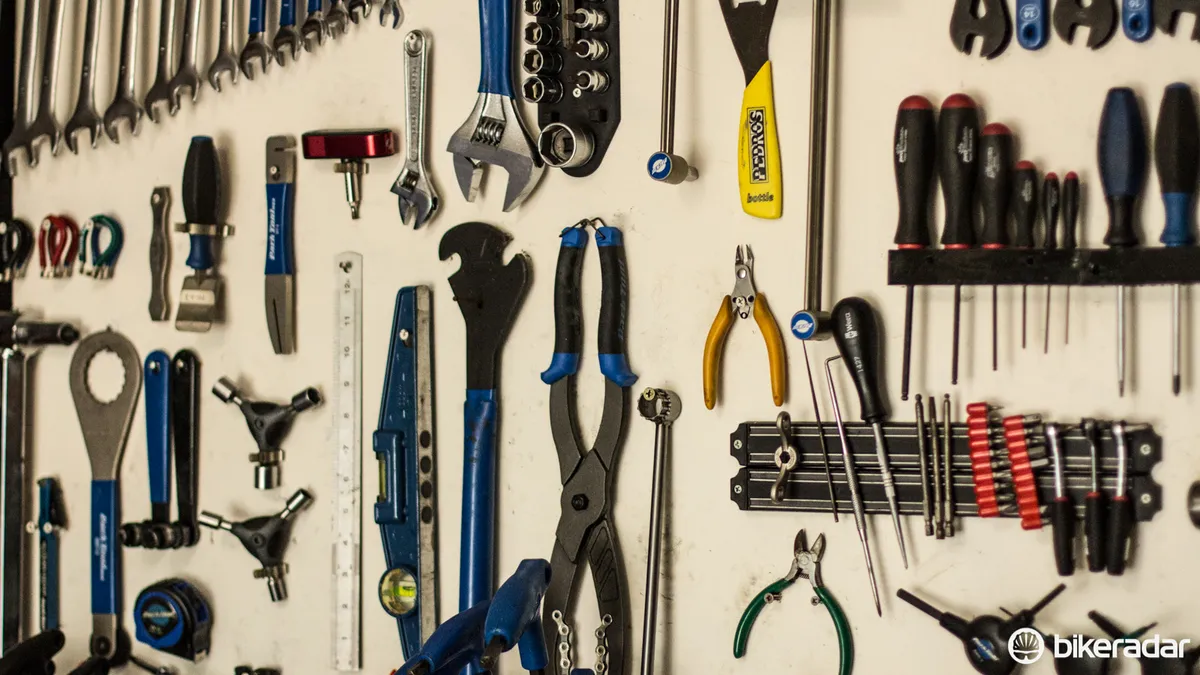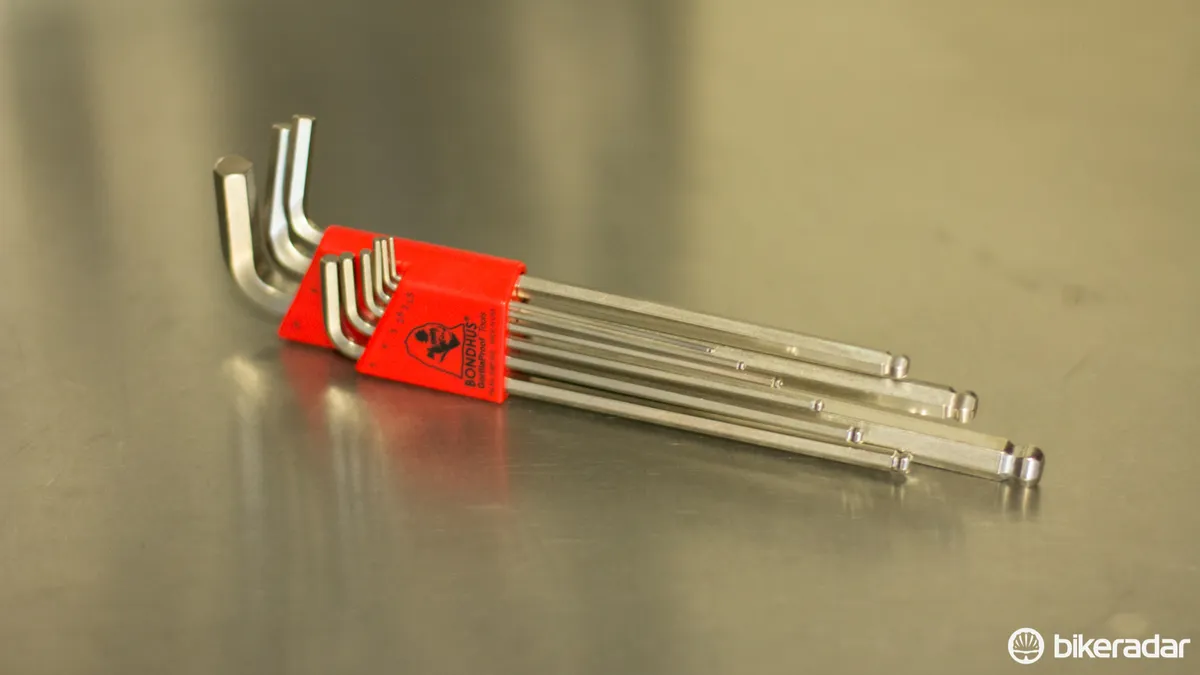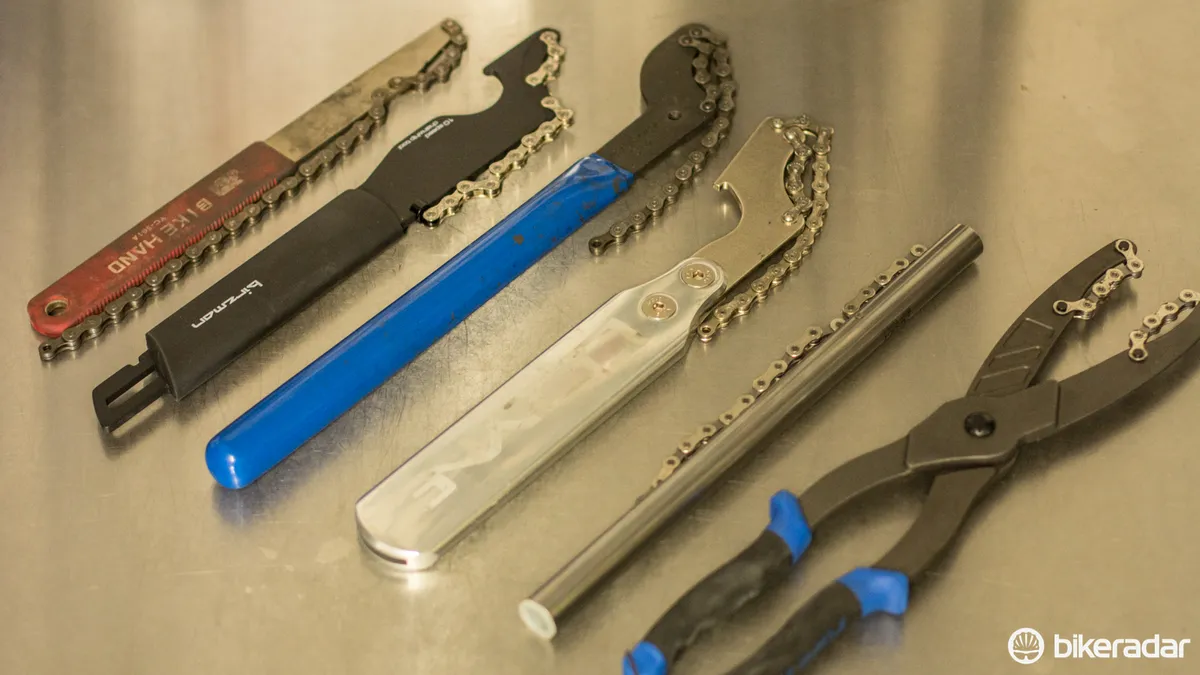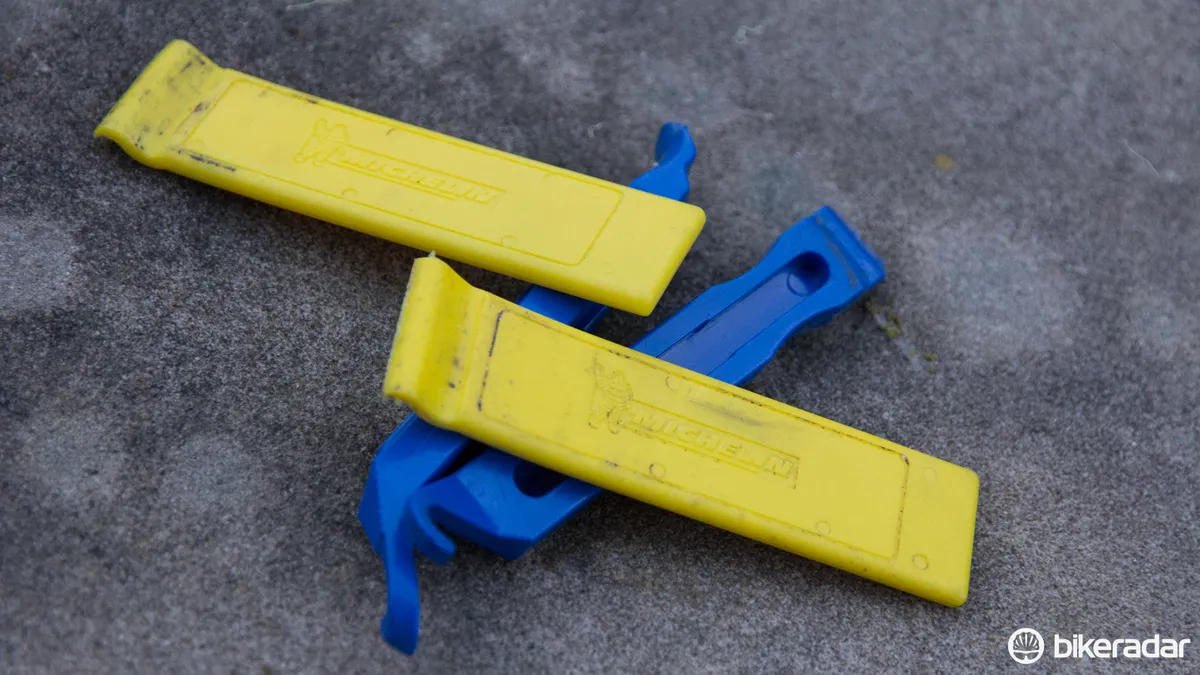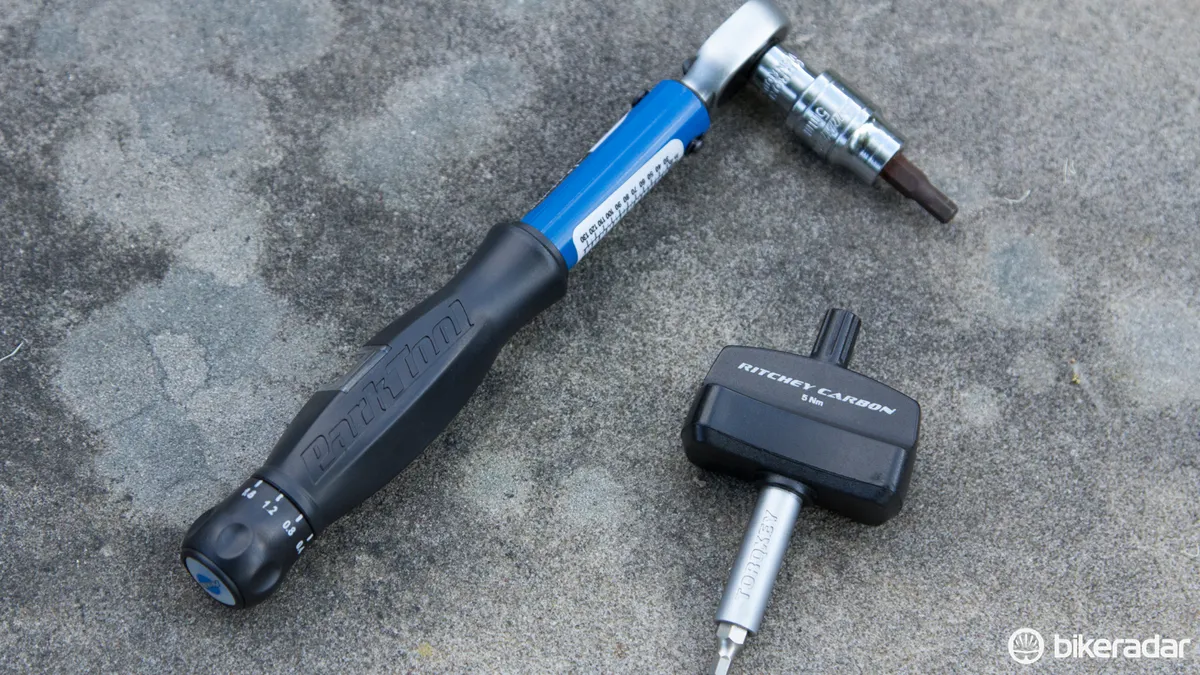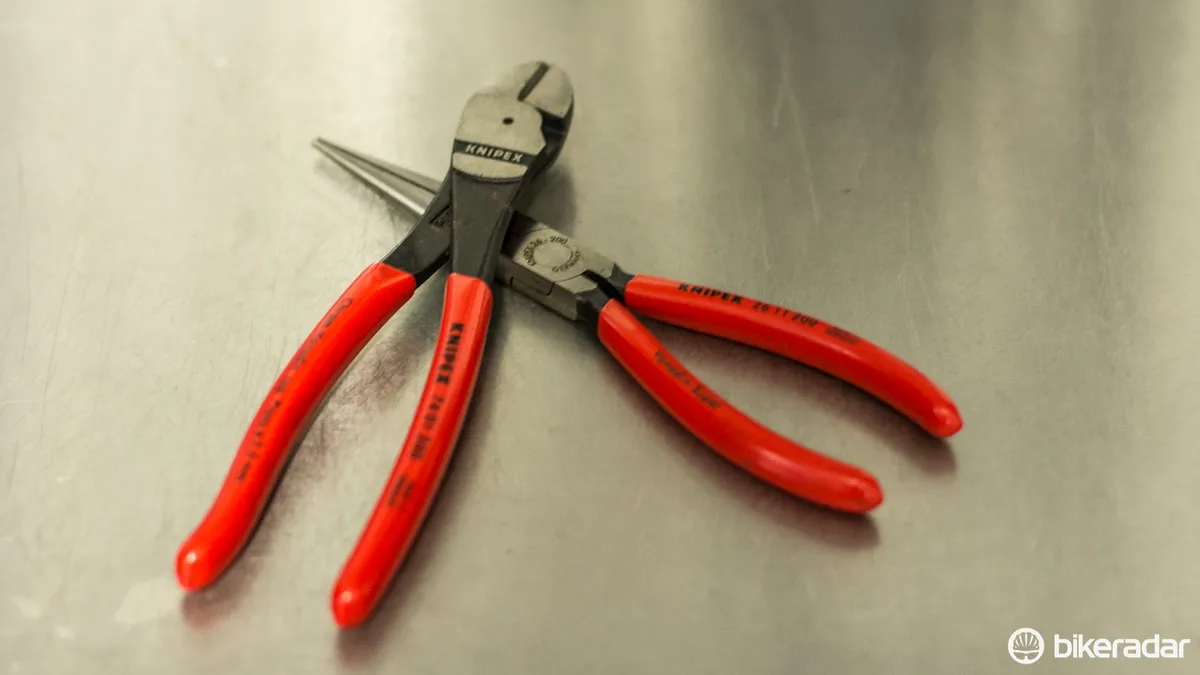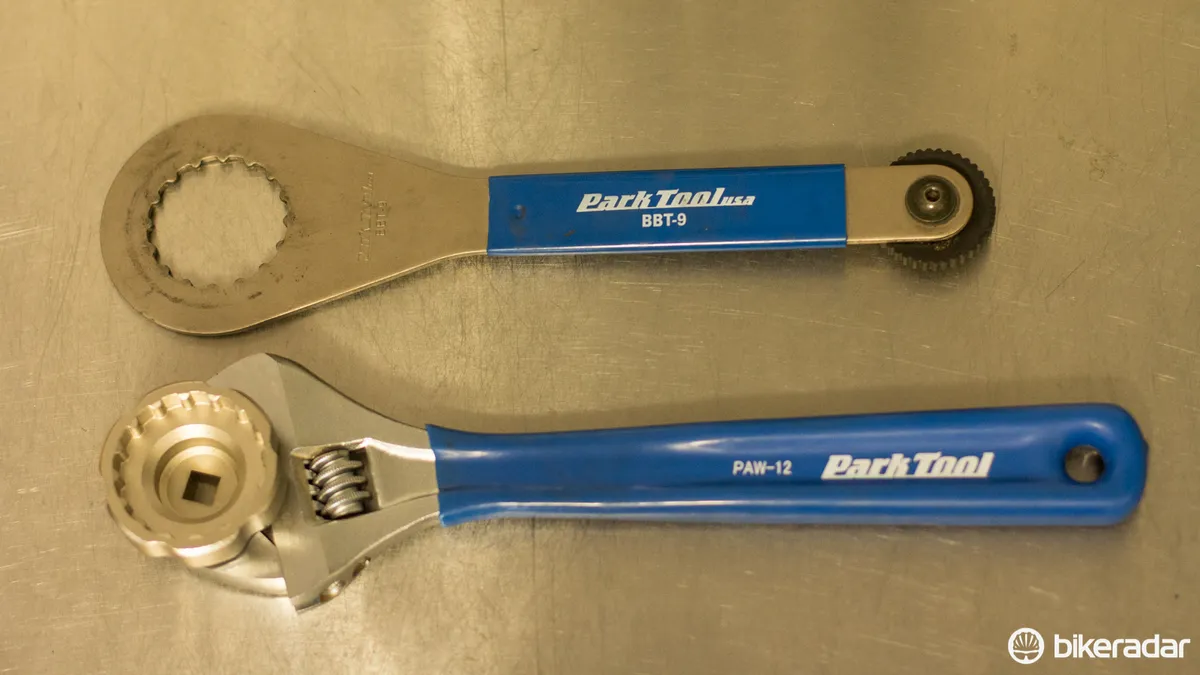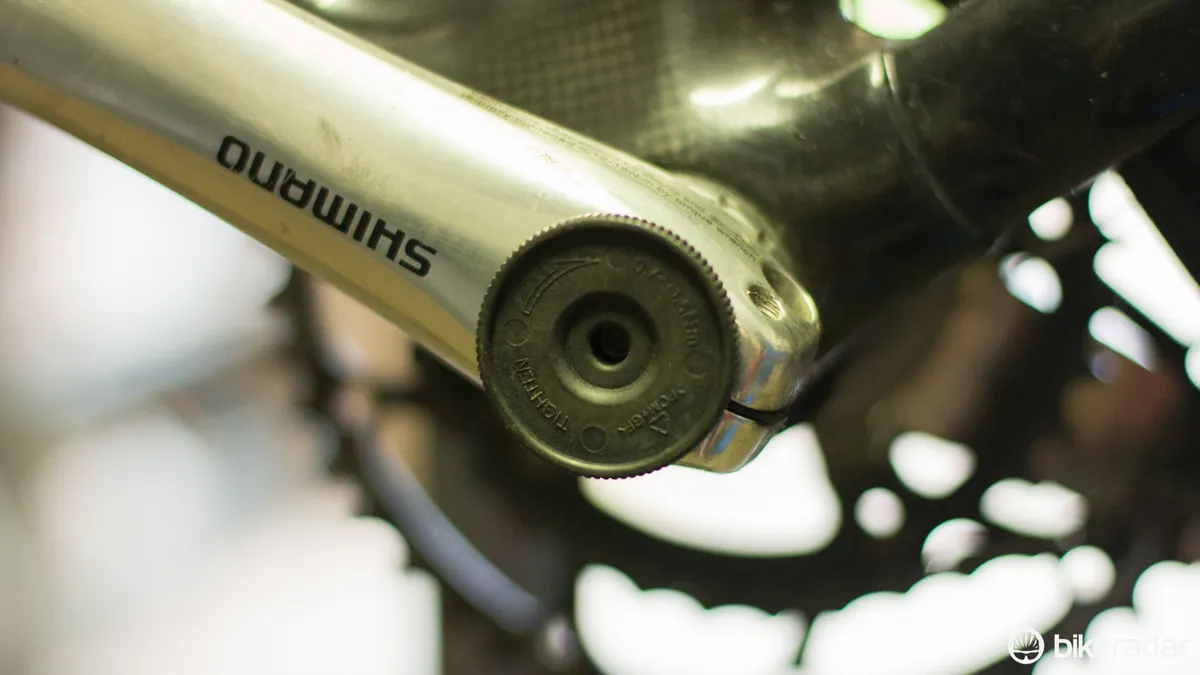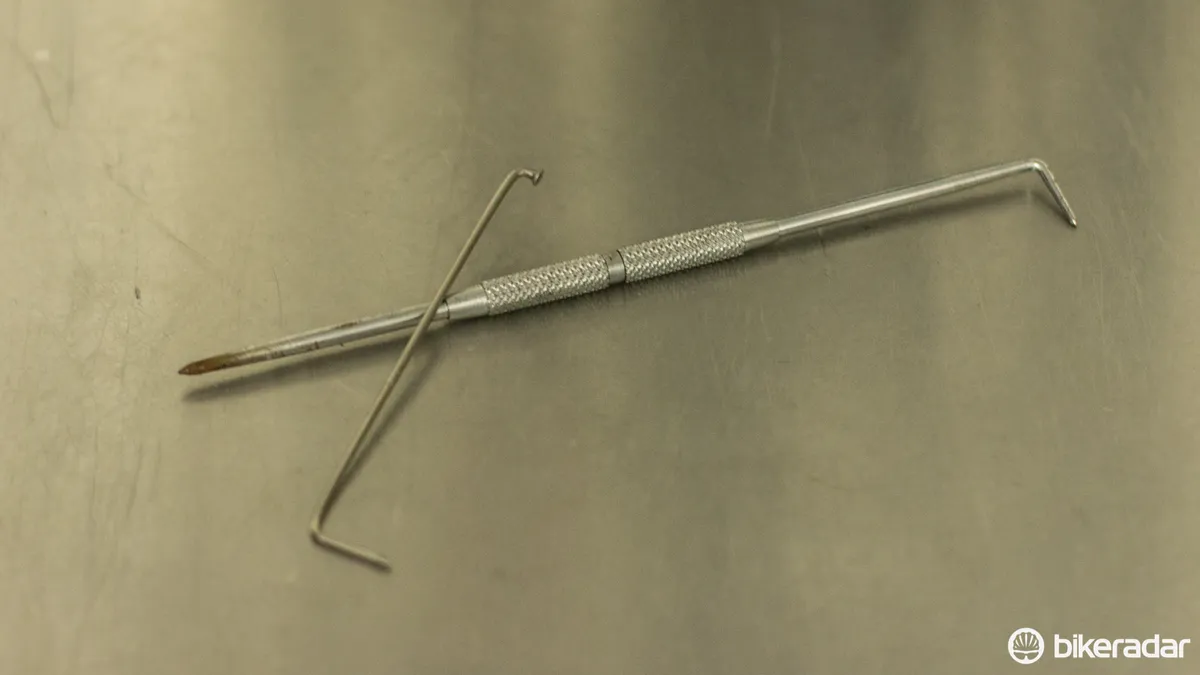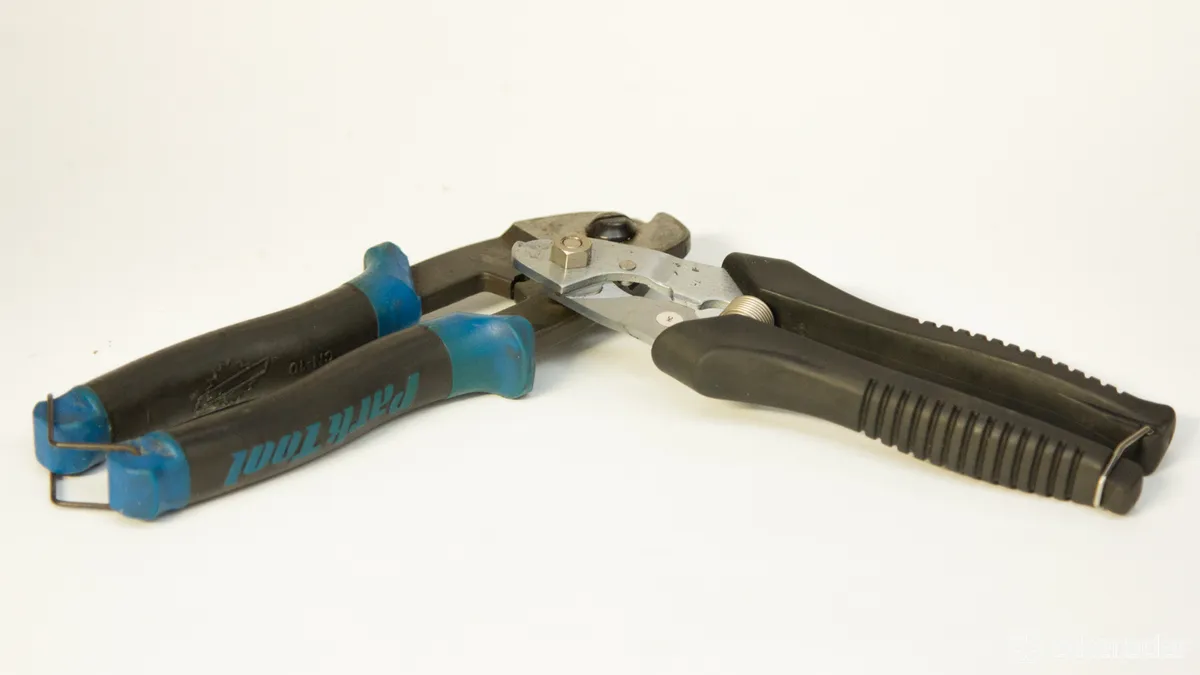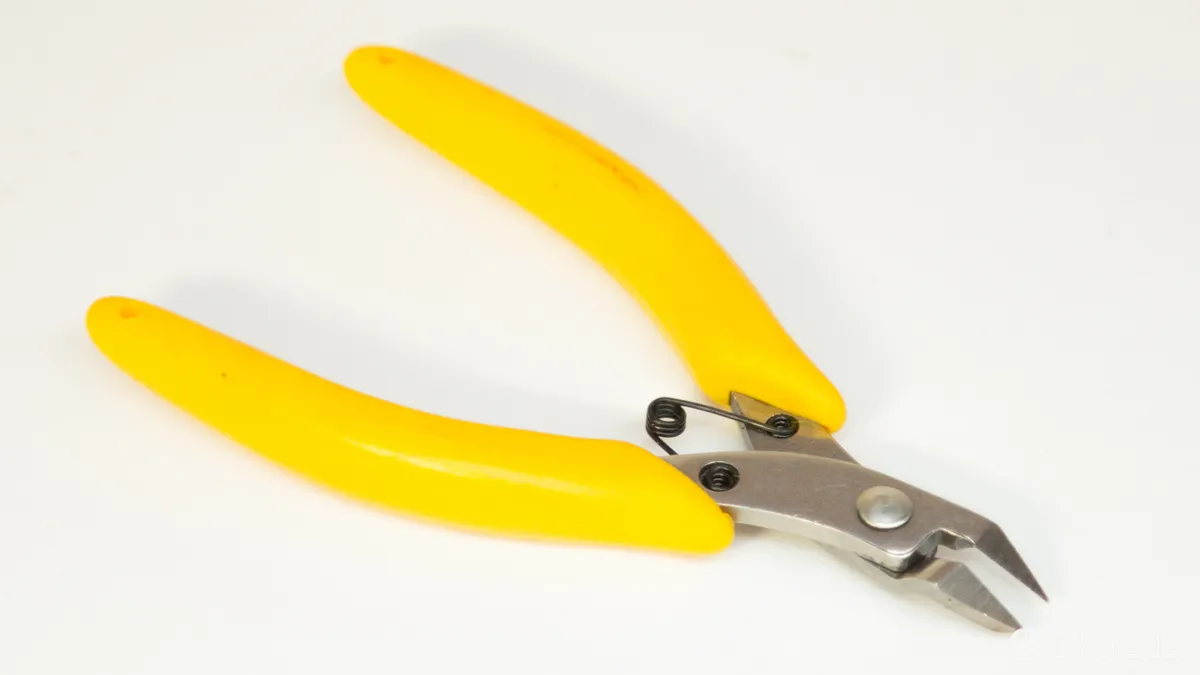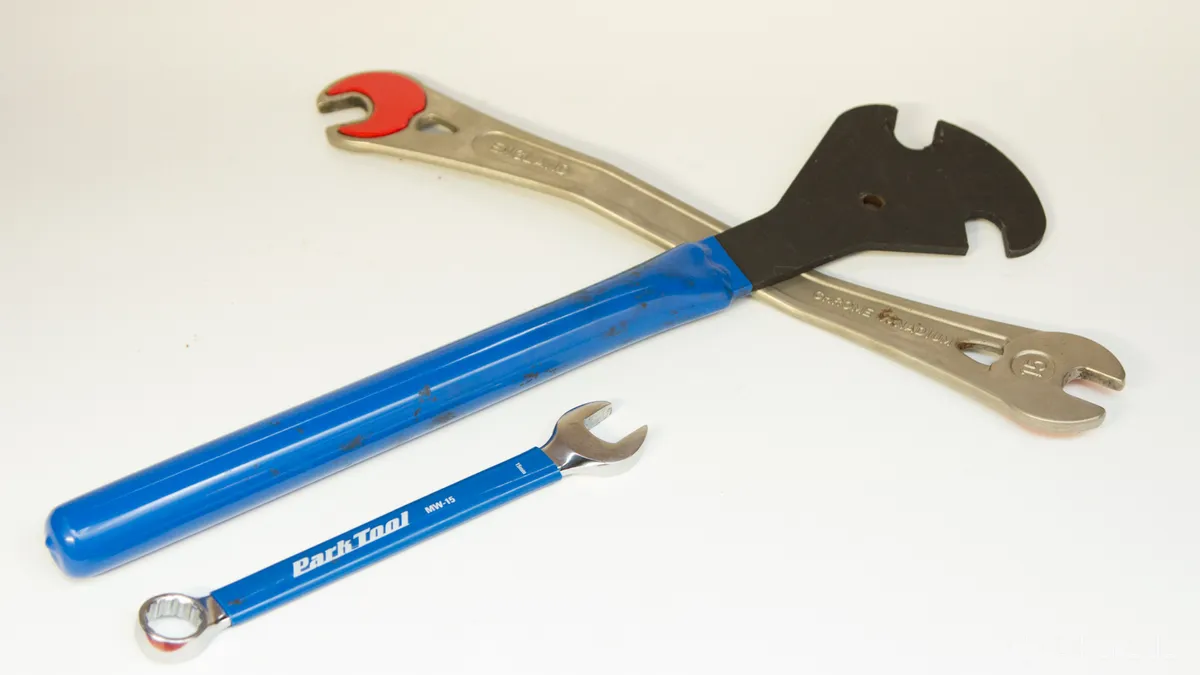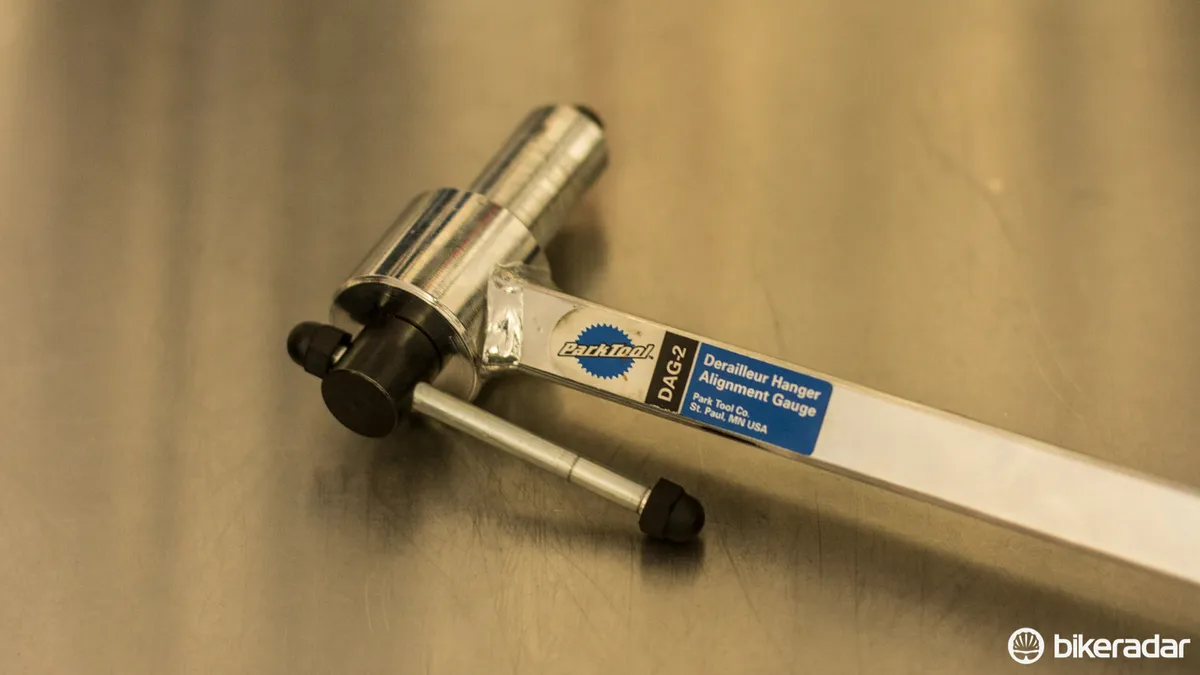Okay so, I'm starting with a hypothetical situation in which I have a modest budget to spend and an empty toolbox (or wall, or bag). What tools would I start with for use in a home workshop?
"Start with" is key here, because this budget won't actually go very far where some pro-level tools are concerned. Rather, I'll be focusing on quality, good-value items that I’ve learned to trust — which, for the casual user, will likely last a lifetime.
- 12 bike maintenance misconceptions that could cost you time and money
- Top 10 bike maintenance don'ts
So whether you’re truly coming from having nothing, or have been wrenching for long enough that your cone-wrenches are burred, hopefully you’ll find something useful in the following list of hand tools.
Pumps, maintenance products and specific bleed kits/suspension tools are not included here, and keep in mind that a repair stand is also always extremely handy.
The list will handle the majority of general servicing and repairs, and is in approximate order of what I’d recommend buying as your skill level progresses — though not all will be applicable depending on whether you ride mountain or road, your desired ‘hands-on’ level and the age/quality of your bike.
1. Hex wrenches (Allen keys)
My very first quality hex wrenches were a small set of US-made Bondhus from the local hardware store. To this day, Bondhus are my go-to for a good value set.
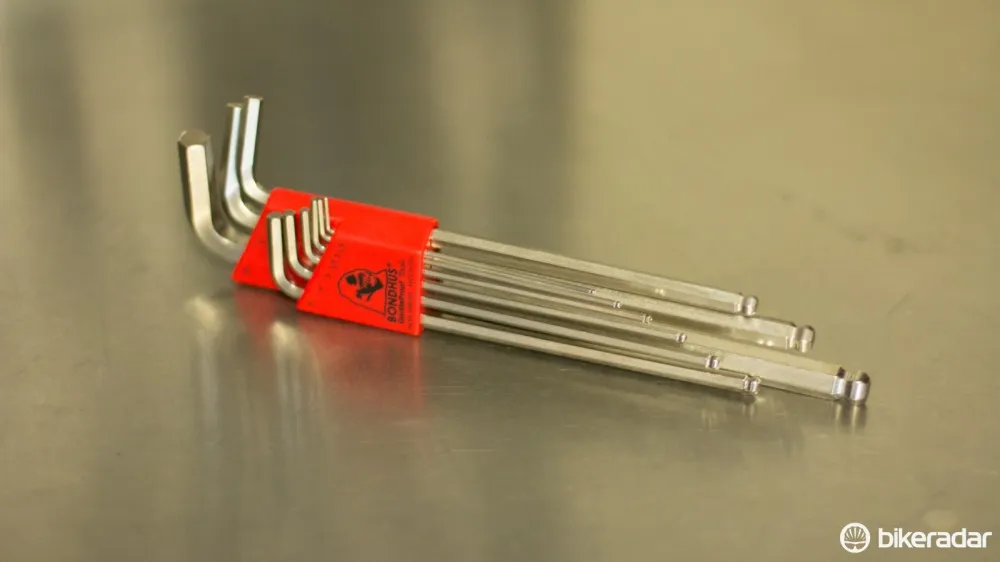
The extra-long ball-end 1.5mm–10mm nine-piece set is the one you want, and this will get you through the majority of repairs. I’ve covered hex wrench types in more detail as part of an earlier article, and while L-wrenches aren’t my first choice, they remain the most versatile if you can only stretch to one set.
2. Tyre levers
So basic, but sometimes tight and stubborn tyres just need them. While they're not the strongest or the quickest to use, the flat lever types from Pedro's, Park and Michelin are my preferences, because of how they slip underneath the tightest beads.
3. Screwdrivers
The set up of derailleurs and some brake systems call for screwdrivers, as do certain shifters and accessories. A small set, including a Phillips PH-2, PH-0 and a couple of flat heads, are all you’ll need.
I personally use drivers from Felo, but cheaper hardware store brands such as Craftsman and Stanley work just fine.
4. Torx keys
Torx heads are quickly becoming a common sight on the modern bike, with their star-shaped interface providing more surface area with a tool to prevent stripping. The most commonly needed sizes are T10, T20, T25 and T30.
As with hex wrenches, it's wise to look beyond the cheapest option. Bondhus — again — is my go-to brand for a great value set, although most bike tool makers will offer something.
5. Chain checker
I’ve mentioned this many times before, but a basic chain checker tool is likely to save you money in the long run. The fixed length types do the job just fine, I use a Park CC-3.2, but most brands make something similar.
6. Pedal wrench
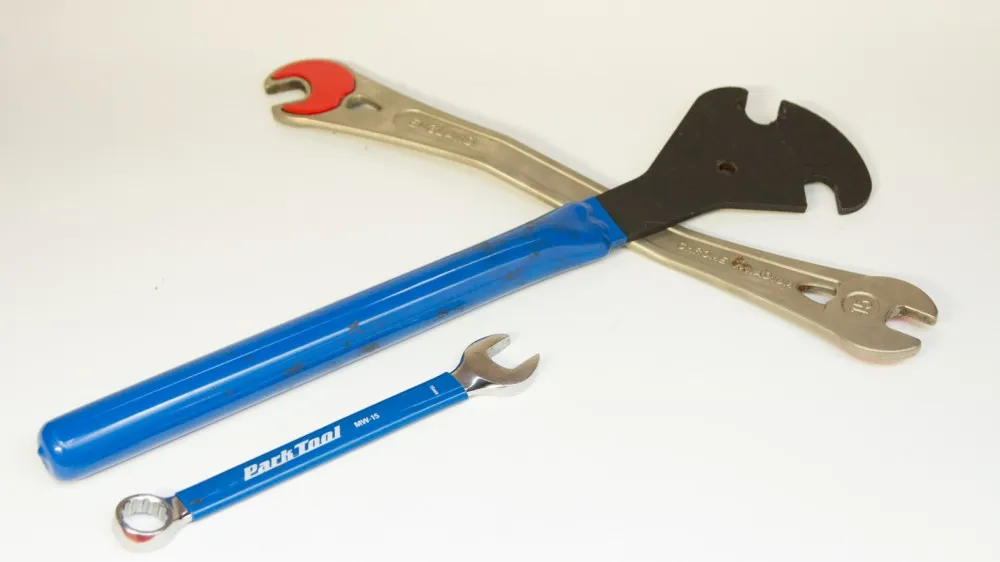
You’ll be able to use a 6mm or 8mm hex wrench for most pedals, but a decent pedal wrench is needed for other systems (eg. Speedplay). While a 15mm spanner may work, often you need the narrow profile of a proper pedal wrench.
Leverage is key, don’t go for the very cheapest options as they're often lacking in length. For UK readers, the Cyclo Pro Series Forged wrench (silver and red tool, pictured above) is great value; those in the US will probably find Park’s PW3 a good option.
7. Chain breaker
Owning a dedicated chain breaker makes replacing a chain far more enjoyable than using the rusting multitool from your saddlebag. Investing in a shop-grade tool will ensure the tool pins are replaceable and that the tool itself won’t bend enough to damage a chain (which can happen).
The Park CT3.2 is a refinement of a classic, especially in that it works with nearly all chains (11-speed Campagnolo chain peening excluded).
8. Tape measure and metal ruler
Most people will have a tape measure somewhere, and a small basic one is extremely useful in setting suspension sag and knowing your bike set up dimensions such as saddle height. A basic 2m-length Stanley or similar from a hardware store is perfect.
A metal ruler is really useful too. Use it to check straightness of axles or measure spokes.
9. Torque wrench
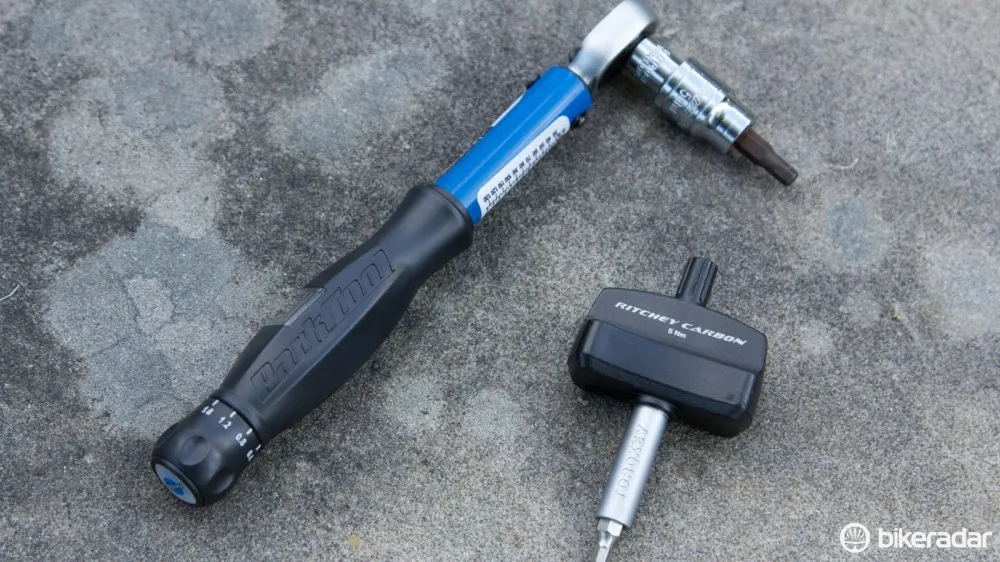
A torque wrench is strongly recommended if you’re working with carbon or other lightweight materials. For most applications, a preset 4nm or 5nm Torqkey from Ritchey, Bontrager or CDI will do the job perfectly and cheaply.
If you’re planning to torque more than just seat clamps and stems, then you may need a tool with an adjustable range. Beam-type torque wrenches are cheap and reliable, whereas the click-type tools offered by nearly all cycling tool brands are quicker to use.
For the money, it’s hard to beat the items sold by PRO, BBB and X-Tools (Pro model) — after all, these (and some others) are mostly the same tool with different packaging. Look for a torque range somewhere around 3-15nm, which will cover you when working with most common delicate components.
Though they're often included, you’ll need bits with your torque wrench — 4, 5 and 6mm Allen key and T25 and T30 Torx are the most commonly used.
- Buy the Topeak Torqbox Nano from Evans Cycles
- Buy the X-Tools Pro Torque Wrench and Bit Set from Wiggle
10. Open-end wrenches
While you're unlikely to need them during most repairs of a quality modern bike, a basic set of spanners from 6-17mm is still useful to keep around — and more so if you’re working on kids' bikes or anything a little older.
On a modern bike, the smallest sizes can be useful when working with disc brakes, while something like a 17mm spanner is used on most cup and cone style hubs (a cone spanner will work too). Pick up a set from a hardware or automotive store.
11. Scissors and side cutters
Needed for bar tape and cutting rags, a decent pair of scissors is a must have. Personally, I use a quality pair bought from a material and craft store, but a hardware store will sell similar.
Side cutters are great for cutting things when scissors can’t. You don’t need to spend heaps, just don’t get the very cheapest.
I use pliers and cutters from Knipex, but most mid-range stuff sold in hardware stores will work. Side cutters with a soft touch are perfect for crimping cables too.
12. Cassette lockring tool and chain whip
To remove a cassette, you’ll need both of these. Be careful to get the correct cassette tool for your bike. The Shimano HG type will cover over 95 percent of bikes out there, but Campagnolo (and a few others) still require something else.
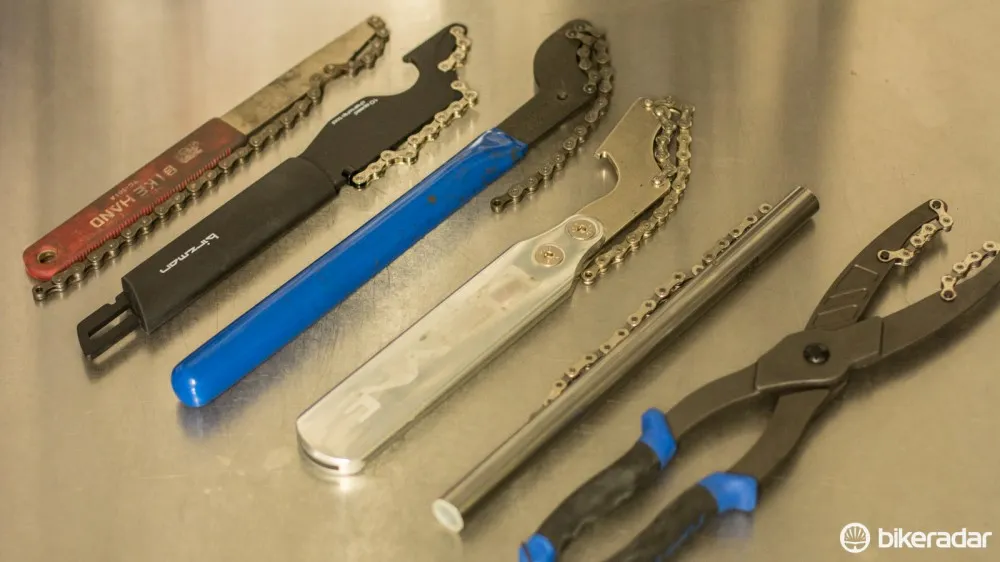
It’s possible to go a little cheaper here. Chain whips are easy to repair with new segments of chains and even the cheap lockring tools tend to last. The ones from Abbey Bike Tools are particularly good, but my old Lifu 1/2in drive mounted on a cheap 1/2in breaker bar has served me well.
One additional thing to consider is that the cassette lockring tool is often needed for Centerlock disc rotors — here the cheapest of tools often don’t have to depth to reach over the axle. If you have this style of disc rotor, invest in a lockring tool from a bigger name brand.
- Buy the Park Tool FR-5.2 Cassette Lockring Tool from Leisure Lakes Bikes
- Buy the Pro Chainwhip from Superstar Components
13. Bottom bracket tool for threaded frames
With so many bottom bracket standards, it can be hard to know which one to get. But unless you’re fixing bikes for others, you only need the tool that fits your bike. Tools from Park, Pedro's and Birzman generally offer the best quality without huge asking prices.
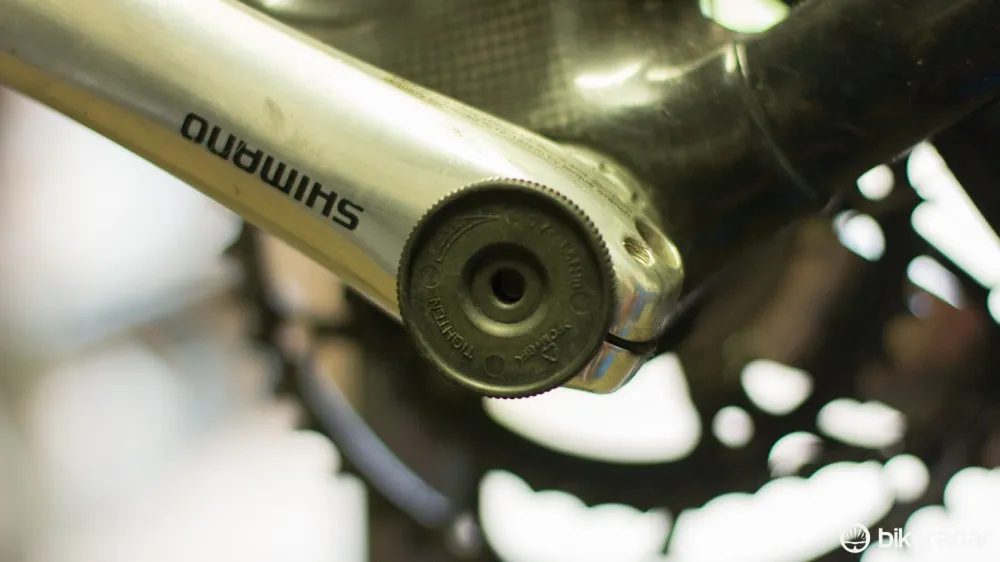
If you have modern Shimano cranks, you'll also need the Hollowtech cap tool. For a few dollars (or pounds) you can get Shimano's plastic TL-FC16.
If your frame is using press-fit systems (BB30, PF30, BB386, PF86, etc), then traditional bottom bracket tools are not needed. Instead, you’ll need a whole different list.
Note: if you’re still using an older crank type with a Octalink or Square tapered bottom bracket, you’ll need a crank puller too. The Park CWP-7 is a fantastic option.
14. Adjustable wrench
You’ll probably need something to turn those cassette and bottom bracket tools with. A 12in adjustable wrench will almost always get it done; however, an alternative is a long 1/2 or 3/8in breaker bar, assuming your cycling tools are compatible.
15. Cable housing cutter
Replacing your gear and brake cables from time to time will ensure things work as smoothly as they can.
A quality housing-cutter will mean you don't waste time and money with poorly finished and fraying cables. While it's not the cheapest available option, the Park CN10 is a very solid option.
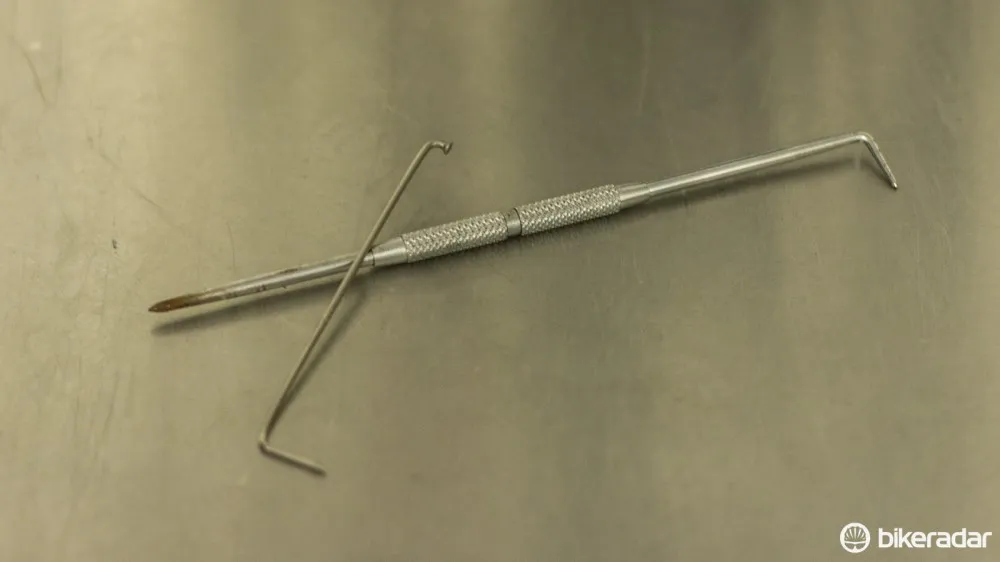
Tip: a dental pick or a sharpened spoke makes the perfect tool for opening the ends of freshly cut housing.
16. Cone wrenches
These are only needed if your hubs feature ‘cones’. A cone wrench is an ultra-thin spanner that fits into the confined slots. Common sizes are 13, 15, 17 and 19mm, although they can vary based on brand and axle type.
As these tools are so thin, strength is important — and those from Park Tool and Pedro's are proven. Cheaper options can be thicker and in some cases won’t work for the very purpose they're designed.
17. Utility knife
Always handy to have around and often useful for opening bearing seals. I use a replaceable blade foldout version from the hardware store.
18. Needle nose pliers
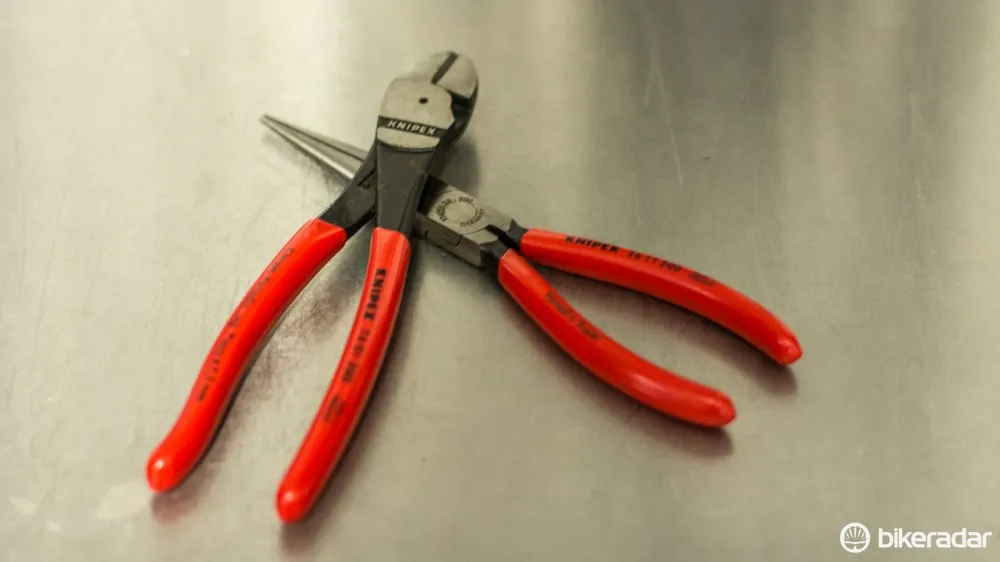
Pliers are another item useful to have around, and a pair with a needle nose will allow access into tighter areas. If you’re buying a pair of side cutters, you may as well get the matching needle nose pliers.
19. Spoke wrench
Truing wheels is something that scares many cyclists, but if you’re keen to give it a go you’ll need at least a decent spoke wrench. Don’t bother with a full set, just get the size that fits your wheel.
Note: Bladed spoke wheels need a tool to stop the spoke from twisting. I like the Park BSH-4 as it’s cheap and effective.
20. Mallet
Sometimes a hammer is the perfect tool (though more often then not, it’s terrible). Given you’re unlikely to be driving nails into a bike, a small soft-faced or plastic dead-blow mallet from the hardware store is generally ideal.
21. Chainring nut wrench
Some chainring bolts will have what looks like a slot in the back of them. For these, a basic and cheap chainring nut wrench will hold the back nut while you tighten or loosen the front bolt.
22. Plastic flush-cutters
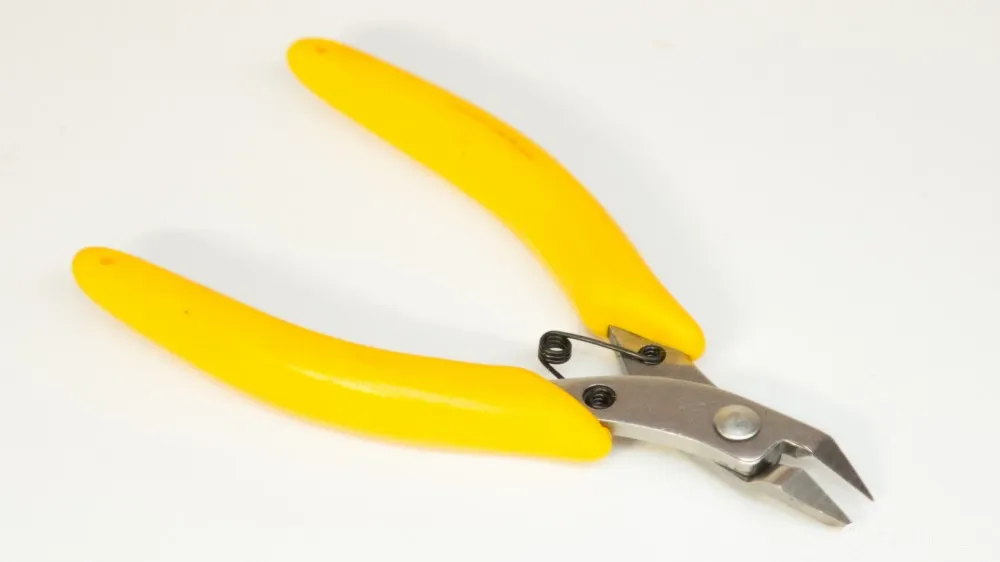
Used purely for giving a smooth edge to a zip-tie, these can either be in a gun style or as bevel-free side cutters. Either way, you’ll pay less than £10 / US$10 for these in a hardware store or on eBay.
23. Derailleur hanger gauge
By now the budget is likely blown, but any remaining cash should be spent on this tool, which has traditionally been considered as a ‘shop-only’ item.
As derailleur hangers have become softer to save delicate frames, and more gears have been forced into the same freehub space, this tool has grown in necessity. The Park Tool DAG2 is considered the usual go-to and, while it might seem expensive, is actually mid-priced. Once you know how to use it, you’ll feel like a true pro.
